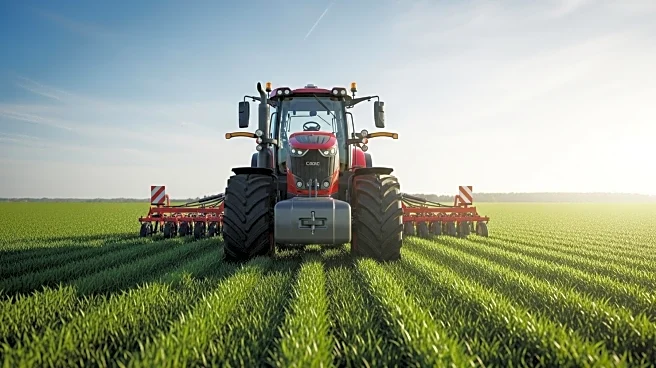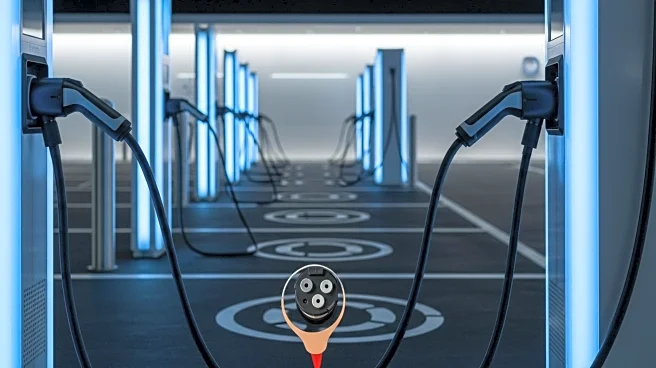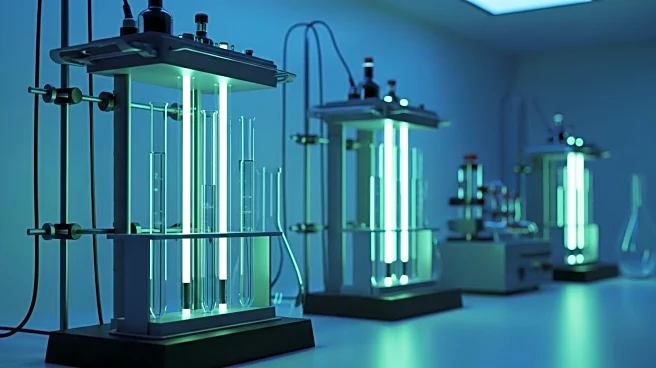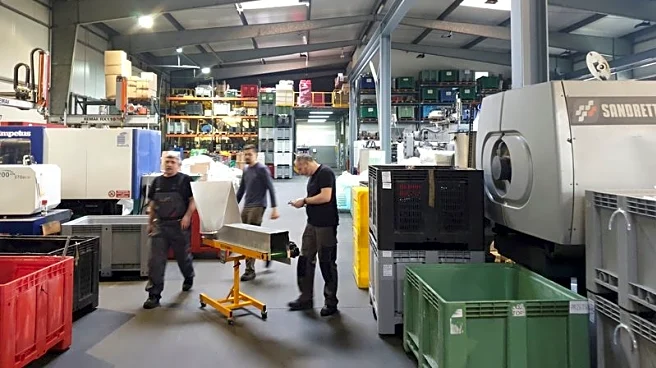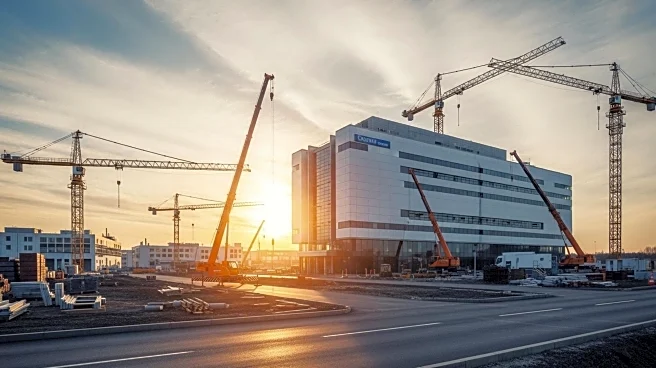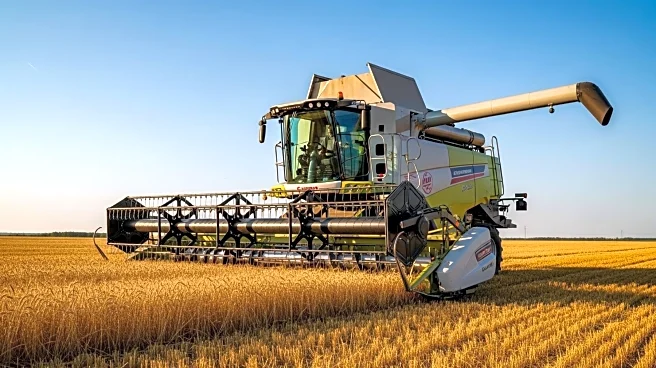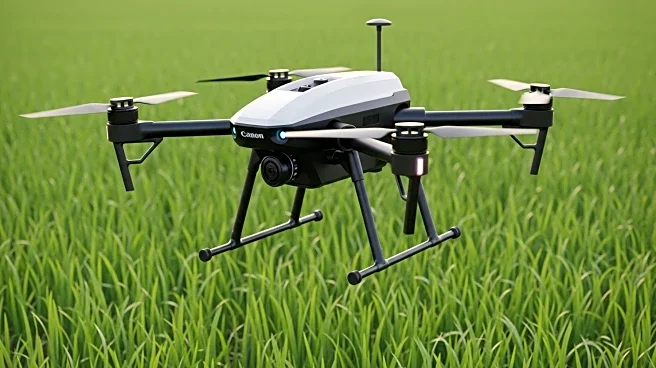What is the story about?
What's Happening?
CLAAS Omaha Inc. has initiated the construction of a new research and development facility in Omaha, Nebraska, aimed at enhancing agricultural equipment production. The facility, spanning 44,800 square feet, is expected to create jobs in construction, agriculture, engineering, and research, thereby strengthening the local workforce. Representative Mike Flood highlighted the community benefits, noting contributions from various Nebraska regions, including Grand Island and Norfolk. The facility will focus on testing agricultural equipment designed for crops like corn and soybeans, ensuring optimal performance during harvest seasons. CLAAS President Matt Ristow emphasized the importance of reliable machinery for farmers, which indirectly impacts consumers nationwide.
Why It's Important?
The establishment of this facility is significant for the local economy, promising increased revenue and tax contributions that will benefit public services such as schools and roads. By enhancing agricultural equipment reliability, CLAAS supports farmers in maximizing their yield, which is crucial for food production and supply chains. The project underscores CLAAS's commitment to the U.S. market, potentially leading to advancements in agricultural technology and practices. This development not only supports local employment but also strengthens the agricultural sector, which is vital for both regional and national food security.
What's Next?
The research and development center is slated for completion by next fall, with CLAAS planning to move into the new facility by the end of 2026. The grand opening will follow, marking a new phase in the company's operations. As the facility becomes operational, it is expected to foster innovation in agricultural machinery, potentially leading to new product launches and enhanced farming techniques. Stakeholders, including local government and agricultural communities, will likely monitor the project's progress and its impact on the region's economic and social landscape.
Beyond the Headlines
The facility's development may have broader implications for sustainable farming practices, as improved machinery can lead to more efficient resource use and reduced environmental impact. Additionally, the project highlights the interconnectedness of local industries, with contributions from various sectors and regions within Nebraska. This collaborative approach may serve as a model for future industrial developments, emphasizing community involvement and regional benefits.
AI Generated Content
Do you find this article useful?


